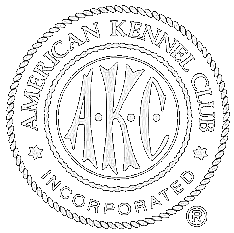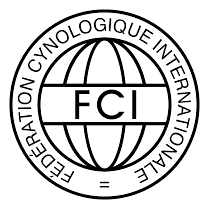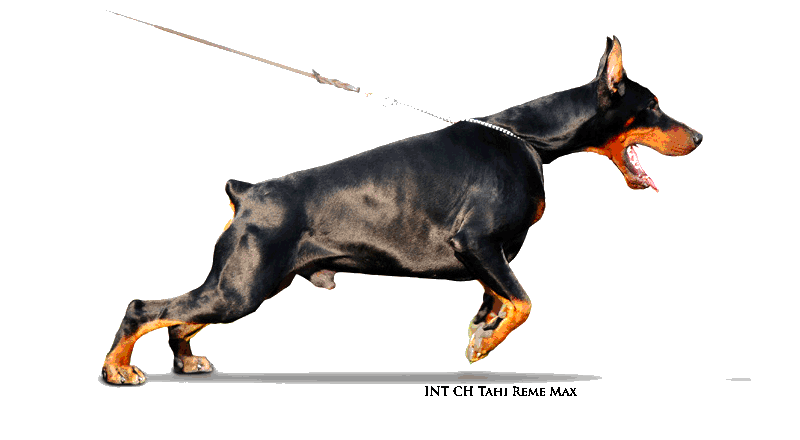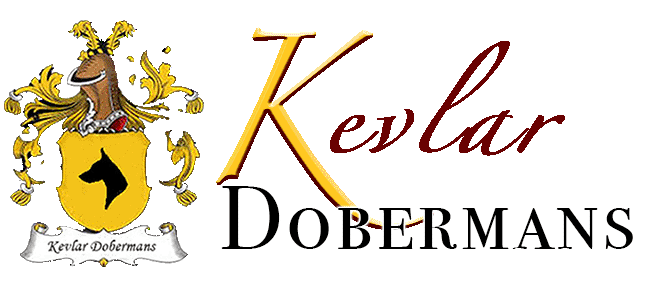

General Appearance
The appearance is that of a dog of medium size, with a body that is square. Compactly built, muscular and powerful, for great endurance and speed. Elegant in appearance, of proud carriage, reflecting great nobility and temperament. Energetic, watchful, determined, alert, fearless, loyal and obedient.
Size, Proportion, Substance
Height at the withers: Dogs 26 to 28 inches, ideal about 27½ inches; Bitches 24 to 26 inches, ideal about 25½ inches. The height, measured vertically from the ground to the highest point of the withers, equaling the length measured horizontally from the fore chest to the rear projection of the upper thigh. Length of head, neck and legs in proportion to length and depth of body.
Head
Long and dry, resembling a blunt wedge in both frontal and profile views. When seen from the front, the head widens gradually toward the base of the ears in a practically unbroken line. Eyes almond shaped, moderately deep set, with vigorous, energetic expression. Iris, of uniform color, ranging from medium to darkest brown in black dogs; in reds, blues, and fawns the color of the iris blends with that of the markings, the darkest shade being preferable in every case. Ears normally cropped and carried erect. The upper attachment of the ear, when held erect, is on a level with the top of the skull.
Top of skull flat, turning with slight stop to bridge of muzzle, with muzzle line extending parallel to top line of skull. Cheeks flat and muscular. Nose solid black on black dogs, dark brown on red ones, dark gray on blue ones, dark tan on fawns. Lips lying close to jaws. Jaws full and powerful, well filled under the eyes.
Teeth strongly developed and white. Lower incisors upright and touching inside of upper incisors a true scissors bite. 42 correctly placed teeth, 22 in the lower, 20 in the upper jaw. Distemper teeth shall not be penalized. Disqualifying Faults: Overshot more than 3/16 of an inch. Undershot more than 1/8 of an inch. Four or more missing teeth.
Neck, Topline, Body
Neck proudly carried, well muscled and dry. Well arched, with nape of neck widening gradually toward body. Length of neck proportioned to body and head. Withers pronounced and forming the highest point of the body. Back short, firm, of sufficient width, and muscular at the loins, extending in a straight line from withers to the slightly rounded croup.
Chest broad with fore chest well defined. Ribs well sprung from the spine, but flattened in lower end to permit elbow clearance. Brisket reaching deep to the elbow. Belly well tucked up, extending in a curved line from the brisket. Loins wide and muscled. Hips broad and in proportion to body, breadth of hips being approximately equal to breadth of body at rib cage and shoulders. Tail docked at approximately second joint, appears to be a continuation of the spine, and is carried only slightly above the horizontal when the dog is alert.
Forequarters
Shoulder Blade – sloping forward and downward at a 45-degree angle to the ground meets the upper arm at an angle of 90 degrees. Length of shoulder blade and upper arm are equal. Height from elbow to withers approximately equals height from ground to elbow. Legs seen from front and side, perfectly straight and parallel to each other from elbow to pastern; muscled and sinewy, with heavy bone. In normal pose and when gaiting, the elbows lie close to the brisket. Pasterns firm and almost perpendicular to the ground. Dewclaws may be removed. Feet well arched, compact, and catlike, turning neither in nor out.
Hindquarters
The angulation of the hindquarters balances that of the forequarters. Hip Bone falls away from spinal column at an angle of about 30 degrees, producing a slightly rounded, well filled-out croup. Upper Shanks at right angles to the hip bones, are long, wide, and well-muscled on both sides of thigh, with clearly defined stifles. Upper and lower shanks are of equal length. While the dog is at rest, hock to heel is perpendicular to the ground. Viewed from the rear, the legs are straight, parallel to each other, and wide enough apart to fit in with a properly built body. Dewclaws, if any, are generally removed. Cat feet as on front legs, turning neither in nor out.
Coat
Smooth-haired, short, hard, thick and close lying. Invisible gray undercoat on neck permissible.
Color and Markings
Allowed Colors: Black, red, blue, and fawn (Isabella). Markings: Rust, sharply defined, appearing above each eye and on muzzle, throat and fore chest, on all legs and feet, and below tail. White patch on chest, not exceeding ½ square inch, permissible. Disqualifying Fault: Dogs not of an allowed color.
Gait
Free, balanced, and vigorous, with good reach in the forequarters and good driving power in the hindquarters. When trotting, there is strong rear-action drive. Each rear leg moves in line with the foreleg on the same side. Rear and front legs are thrown neither in nor out. Back remains strong and firm. When moving at a fast trot, a properly built dog will single-track.
Temperament
Energetic, watchful, determined, alert, fearless, loyal and obedient. The judge shall dismiss from the ring any shy or vicious Doberman.
Shyness: A dog shall be judged fundamentally shy if, refusing to stand for examination, it shrinks away from the judge; if it fears an approach from the rear; if it shies at sudden and unusual noises to a marked degree.
Viciousness: A dog that attacks or attempts to attack either the judge or its handler, is definitely vicious. An aggressive or belligerent attitude towards other dogs shall not be deemed viciousness.
Faults
The foregoing description is that of the ideal Doberman Pinscher. Any deviation from the above described dog must be penalized to the extent of the deviation.
Disqualifications
Overshot more than 3/16 of an inch, undershot more than 1/8 of an inch. Four or more missing teeth.
Dogs not of an allowed color.


GENERAL APPEARANCE: The Doberman is of medium size, strong and muscularly built. Through the elegant lines of its body, its proud stature, and its expression of determination, it conforms to the ideal picture of dog.
IMPORTANT PROPORTIONS: The body of the Doberman appears to be almost square, particularly in males. The length of the body measured from the tip of breast to the point of the buttock shall not be more than 5% longer than the height from the withers to the ground in males, and 10% in females.
BEHAVIOR / TEMPERAMENT: The disposition of the Doberman is friendly and calm; very devoted to the family. Medium temperament and medium sharpness (alertness) is desired. A medium threshold of irritation is required with a good contact to the owner. Easy to train, the Doberman enjoys working, and shall have good working ability, courage and hardness. The particular values of self-confidence and intrepidness are required, and also adaptability and attention to fit the social environment. HEAD
CRANIAL REGION: Strong and in proportion to the body. Seen from the top the head is shaped in the form of a blunt wedge. Viewed form the front the crown line shall be almost level and not dropping off to the ears. The muzzle line extends almost straight to the top line of the skull that falls, gently rounded, into the neckline. The superciliary ridge is well developed without protruding. The forehead furrow is still visible. The occiput shall not be conspicuous. Seen from the front and the top the sides of the head must not bulge. The slight bulge between the rear of the upper jawbone and the cheekbone shall be in harmony with the total length of the head. The head muscles shall be well developed. FCI-St. N° 143 / 17.12.2015 4 Stop: Shall be slight but visibly developed.
FACIAL REGION: Nose: Nostrils well developed, more broad than round, with large openings without overall protrusion. Black – in black dogs; in brown dogs, corresponding lighter shades. Muzzle: The muzzle must be in the right proportion with the upper head and must be strongly developed. The muzzle shall have depth. The mouth opening shall be wide, reaching to the molars. A good muzzle width must also be present on the upper and lower incisor area. Lips: They shall be tight and lie close to the jaw that will ensure a tight closure of the mouth. The pigment of the gum to be dark; in brown dogs a corresponding lighter shade. Jaws/Teeth: Powerful broad upper and lower jaw, scissor bite, 42 teeth correctly placed and normal size. Eyes: Medium sized, oval and dark in color. Lighter shades are permitted for brown dogs. Close lying eyelids. Eyelids shall be covered with hair. Ears: The ears, are left natural and of an appropriate size; they are set on either side at the highest point of the skull and are ideally lying close to the cheeks.
NECK: The neck must have a good length and be in proportion to the body and the head. It is dry and muscular. Its outline rises gradually and is softly curved. Its carriage is upright and shows much nobility.
BODY: Withers: Shall be pronounced in height and length, especially in males and thereby determine the slope of the top line from the withers to the croup. Back: Short and firm, of good width and well-muscled. Loin: Of good width and well-muscled. The female can be slightly longer in loin because of the required space for suckling offspring. Croup: It shall fall slightly, hardly perceptible from sacrum to the root of the tail, and appears well rounded, being neither straight nor noticeably sloping, of good width and well-muscled. FCI-St. N° 143 / 17.12.2015 5 Chest: Length and depth of chest must be in the right proportion to the body length. The depth with slightly arched ribs should be approximately 50% the height of the dog at the withers. The chest has got a good width with especially well developed fore chest. Underline and belly: From the bottom of the breastbone to the pelvis the underline is noticeably tucked up.
TAIL: The tail is left natural and is ideally carried high in a slight curve.
LIMBS FOREQUARTERS: General appearance: The front legs as seen from all sides are almost straight, vertical to the ground and strongly developed. Shoulder: The shoulder-blade lies close against the chest, and both sides of the shoulder-blade edge are well muscled and reach over the top of the thoracic vertebra, slanting as much as possible and well set back. The angle to the horizontal is approximately 50%. Upper arm: Good length, well-muscled. Elbow: Close in, not turned out. Forearm: Strong and straight. Well-muscled. Length in harmony with the whole body. Carpus (Wrist): Strong. Metacarpus (Pastern): Bones strong. Straight seen from the front. Seen from the side, only slightly sloping. Forefeet: The feet are short and tight. The toes are arched towards the top (cat like). Nails short black.
HINDQUARTERS: General appearance: Seen from the rear the Doberman looks, because of his well-developed pelvic muscles in hips and croup, wide and rounded off. The muscles running from the pelvic towards the thigh and lower thigh result in good width development, as well as in the thigh area, in the knee joint area and at the lower thigh. The strong hind legs are straight and stand parallel. FCI-St. N° 143 / 17.12.2015 6 Thigh: Good length and width, well-muscled. Good angulation to the hip joint. Angulation to the horizontal approximately between 80°– 85°. Stifle (Knee): The knee joint is strong and is formed by the thigh and lower thigh as well as the kneecap. Lower thigh: Medium length and in harmony with the total length of the hindquarter. Hock joint: Medium strength and parallel. The lower thigh is joined to the metatarsal at the hock joint. Metatarsus (Rear pastern): It is short and stands vertical to the ground. Hind feet: Like the forefeet, the toes of the hind feet are short, arched and closed. Nails short, black.
GAIT / MOVEMENT: The gait is of special importance to both the working ability as well as the exterior appearance. The gait is elastic, elegant, agile, free and ground covering. The forelegs reach out as far as possible. The hindquarter gives far-reaching and necessary elastic drive. The foreleg of one side and the hind leg of the other side move forward at the same time. There should be good stability of the back, the ligaments and the joints. SKIN: The skin fits closely all over and have good pigmentation.
COAT HAIR: The hair is short, hard and dense. It lies tight and smooth and is equally distributed over the whole surface. Undercoat is not allowed. Color: The Doberman is bred in two color varieties: black or brown with rust red, clearly defined and clear markings (tan markings). Tan markings are on the muzzle as a spot on the cheeks and the top of the eyebrow; on the throat; two spots on the fore chest; on the metacarpus, metatarsus and feet; on the inner side of the hind thigh; on the forearms and under the tail. FCI-St. N° 143 / 17.12.2015 7
SIZE AND WEIGHT: Height at the withers: Males: 68 – 72 cm. Females: 63 – 68 cm. Medium size desirable. Weight: Males: about 40 – 45 kg. Females: about 32 – 35 kg.
FAULTS: Any departure from the foregoing points should be considered a fault and the seriousness with which the fault should be regarded should be in exact proportion to its degree and its effect upon the health and welfare of the dog and its ability to perform its traditional work. · Lack of sexual dimorphism; little substance; too light; too heavy; too leggy; weak bones. · Head too heavy, too narrow, too short, too long, too much or too little stop; Rams nose, bad slope of the top line of the skull; weak lower jaw; round or slit eyes; light eye; cheeks too heavy; loose flews; eyes too open or too deep set; ear set too high or too low; open mouth angle. · Back not straight; sway back; roach back; insufficient depth or width of chest; tail set too low; sloping croup; too little or too much tuck up. · Too little angulation in forequarters; hindquarters with too little or too much angulation; loose elbow; feet too close together or too wide apart; cow-hocks, spread hocks; open or soft paws, crooked toes; pale nails. · Tan-markings too light or not sharply defined; smudged markings; mask too dark; big black spot on the legs; chest markings hardly visible or too large; hair long, soft, curly or dull. Thin coat; bald patches. · Deviation of size up to 2 cm from the standard should result in a lowering of the quality grading. · Gait that is not harmonious, in particular pacing. FCI-St. N° 143 / 17.12.2015 8 DISQUALIFYING FAULTS: · Aggressive or overly shy dogs. · Any dog clearly showing physical of behavioral abnormalities shall be disqualified. · Yellow eyes (bird of prey eye); different colored eyes. · Overshot; level bite; undershot; missing teeth according to the formula. · White spots. Visible undercoat. · Dogs which deviate more than 2 cm over or under the standard. N.B.: · Male animals should have two apparently normal testicles fully descended into the scrotum. · Only functionally and clinically healthy dogs, with breed typical conformation should be used for breeding.

